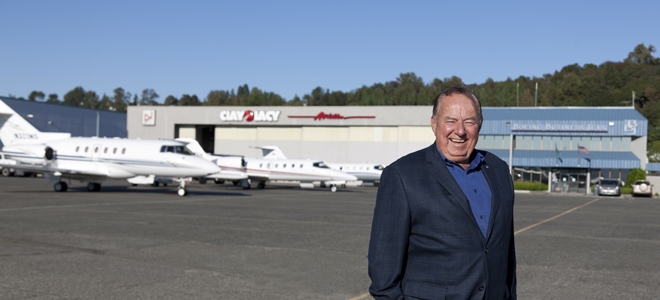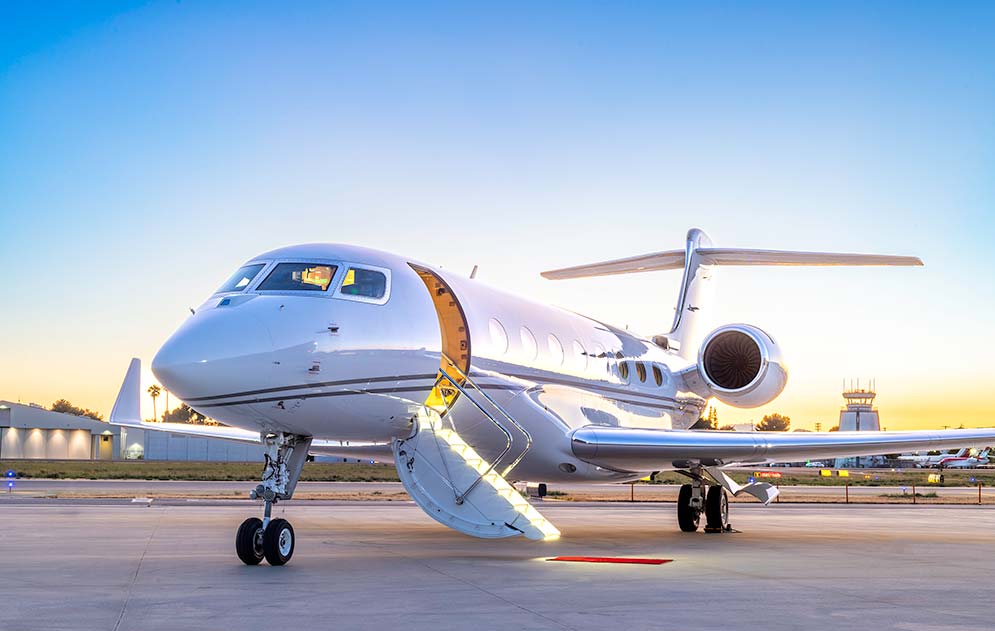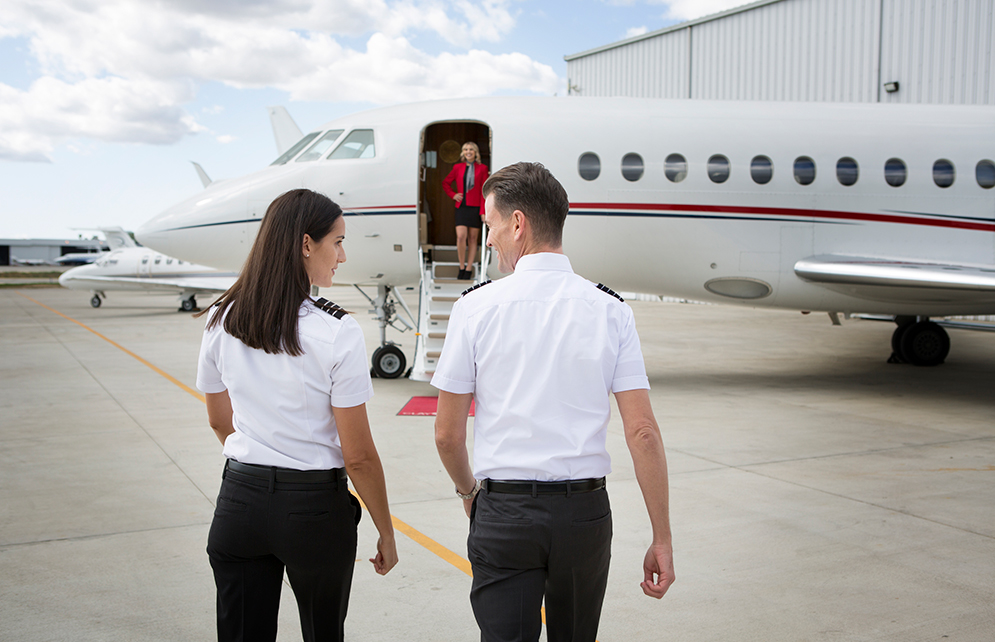
In Aviation, One Size Does Not Fit All
By Clay Lacy in Professional Pilot Magazine’s August 2004 “Position and Hold”
ATP/CFII/Helo?Sea. Gulfstream II/III/IV,
Learjet and Citation series,
HS125, Boeing 747, DC3 and
25 misc type ratings.
When I climb out of my Gulfstream IISP or Learjet 24, after an intercontinental trip or a quick dash back from ICT (Mid-Continent, Wichita KS), I often head for my Bell 206 JetRanger, Pilatus PC6 Porter or Republic RC3 Seabee amphibian to do missions I simply couldn’t do any other way.
Friends and customers of mine who routinely use turboprops swear by them. Raytheon King Airs are wonderfully versatile aircraft. Nothing can do the short-haul, short-strip, bulk hauling that a Cessna Caravan can do and many owners are absolutely sold on the attributes of their fast, efficient Piaggio P180 Avantis, Pilatus PC12s and Socata TBM700s. They’ll routinely fly into 2500-ft ranch strips out west, pick up passengers and head for destinations all over the country. As one operator put it, “I don’t have jet speeds but I’m pretty close and there ain’t no jet that can go in and out of where I fly with my turboprop.”
Roles for helicopters have grown steadily in the past 3 decades, particularly as first responders in special missions applications. In medevac, airborne police patrol and surveillance applications, nothing beats the versatility and capability of a helicopter.
Tiltrotor programs have had their difficulties over recent years but we may see this technology come of age in the next 10 years. In 1998 I had the opportunity to flight test the Bell XV15, predecessor to the Bell/Agusta BA609, and I thought it was easy to fly and handled great. It gives you the ability to take off vertically and go anywhere you please at speeds up to 250 kts —twice the speed of current helicopters. Tiltrotor technology has been in development and flight test since 1955 and is moving ahead with sponsorship of the V22 Osprey. The BA609 program is progressing and may be a reality in the near future. It will have the roominess and speed of a King Air 200, plus it can lift off and land vertically.
VLJs are on the horizon and will soon be at an airport near you. Insurance industry changes, however, promise to make it ever harder for owner pilots who plan to single-pilot business jets. But I do see a strong market for professionally flown VLJs in both air taxi and corporate applications. Cessna CEO Russ Meyer is an avid proponent of the Citation Mustang and that’s an airplane I’m looking forward to flight testing. Last time I talked with Eclipse Aviation CEO Vern Raburn, he had orders for about 2000 Eclipse 500s—and the aircraft still lists at about $1 million. I think we can expect to see VLJs throughout the skies in 10 years’ time.
Not too long ago, former Raytheon Aircraft CEO Roy Norris said that he focused on prospects with about $25 million in gross annual sales as target customers for a Raytheon Premier 1. Raburn, who had been using the figure of $10 million in annual sales as a benchmark for Eclipse 500 qualification, now looks at prospects closer to the $6 million threshold.
The air taxi/air limo role is currently a big unknown for the VLJs—but there will be those who will do it and it’s historically evident that big things often start from small beginnings. Back in the summer of 1909 an aviation enthusiast from the US heartland hitched a ride on a freighter to attend the world’s first aviation meeting in Reims, France. Fifteen years later C E Woolman founded the world’s first aerial crop dusting firm. Within another 5 years he’d founded the airline that is now Delta with a Travel Air Sedan 6000B, designed and built by Walter Beech of the Travel Air Company. Nicknamed the “Limousine of the Air,” the 6000B cruised at 90 mph, featured 5 comfortable wicker seats, and helped launch a major world airline.
There are, and will continue to be, valuable roles for turboprops, helicopters, VLJs and even piston aircraft that do certain things better than anything else and at a lower cost. These aircraft will provide jobs for many of the new pilots who are out there building hours, doing their CFIs, and wondering about employment prospects.
And some day someone is going to develop a practical supersonic business jet (SSBJ). It’s something I’ve been waiting for since the mid-1980s. When the day does arrive nobody is going to begrudge this new technology center stage on world airshow static ramps and grabbing the covers of every bizav trade publication. But, while the SSBJ and its manufacturers are basking in media glory, there’ll be thousands of turboprops, helicopters and new-generation light jets out there doing missions that no other mode of transportation can do as well.
Our industry, I believe, will move forward with expanding roles for all aircraft and without the demise of any one segment. As I’ve said before, “I’ve never met an aircraft I didn’t like.” And it’s true—all aircraft are good aircraft within their particular flight envelopes and for their particular missions.
Clay Lacy, founder of Clay Lacy Aviation at VNY (Van Nuys CA), is a highly experienced pilot who has been performing flightchecks and writing articles for Professional Pilot since May 1997.


